An Interview with Leave No Trace Master Educator, Gillian Rossi
Tell us a little about yourself Gillian. What do you do and why do you think Leave No Trace education is so important?
My name is Gillian Rossi. I work as a Senior Park Ranger for the City of Colorado Springs. I am also a Leave No Trace Master Educator and I volunteer as the State Advocate for Leave No Trace in Colorado. To me, Leave No Trace education is vital because with an increasing population discovering the joys of outdoor recreation, land managers need everyone’s help to act as stewards and keep natural areas healthy and sustainable. Leave No Trace is not common sense. People are not born knowing how to distinguish between a non-durable and durable surface. People don’t inherently know how deep to dig a cathole. I didn’t know until I learned later in life how actions such as tossing apple peels on the trail can have a harmful impact. I’m honored to be an educational resource as people learn how to apply Leave No Trace principles while they recreate.
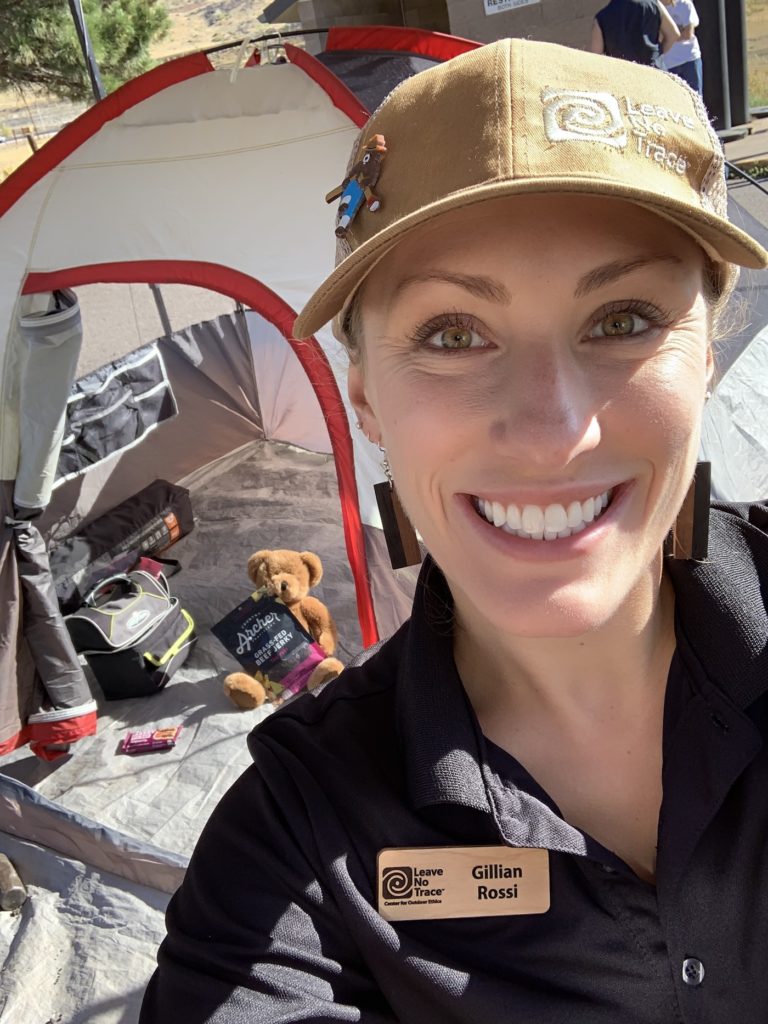
We will be talking about WAG bags in our discussion. Before we get into the application of Leave No Trace principles, can you tell us what WAG bags are?
WAG is an acronym that stands for Waste Alleviation and Gelling. These small, portable bags contain chemical crystals that gel human waste and render it inert so that it can be thrown away in an ordinary trash can. There are a number of WAG bag brands and some can even tie around your waist while you do your business, giving a little extra privacy. Most systems are double or triple sealed so you don’t need to worry about spillage in your pack and the gelling agent prevents sloshing. These systems are often used by climbers, but many runners are not aware that this option exists. You can watch a demonstration video created by Leave No Trace here.
Leave No Trace Principle #1 is: “Plan Ahead and Prepare.” Why is this principle so important for trail runners and what are some tips you have for trail runners as they prepare for their training runs and races?
Principle #1 is first because it is the most important principle. Planning ahead and preparing increases your chances of having a successful and safe trip. Trail runners are out in the parks and open spaces very frequently. The trail runners who use our trail systems often know the trails better than some park staff because they are on the trails year-round, in a variety of elements.
Some general tips: It is important to know the terrain and wear the right shoes. Checking the weather goes a long way, especially here in Colorado where a beautiful, sunny day can end up in a torrential downpour or some dangerous lightning situations. If you are running in muddy conditions, wear shoes that you are okay with getting muddy because you need to be willing to run through mud puddles. Hopping off trail to avoid a puddle is an easy way to roll an ankle or damage trailside vegetation. It is also important to know what users you might share the trail with – will you need to watch for mountain bikers or equestrians? Know the leash laws before you go. Have your route mapped out and know how long it will take you. Let people know where you are going or consider carrying a tracking device.
Common “micro litter” found on the trail is often the corners of gel packets or bar wrappers. Consider repackaging before your run or carrying a small trash bag that ensures that small bits of trash don’t slide out of your pockets undetected. The wrappers end up in our water systems or in ecosystems where they shouldn’t be.
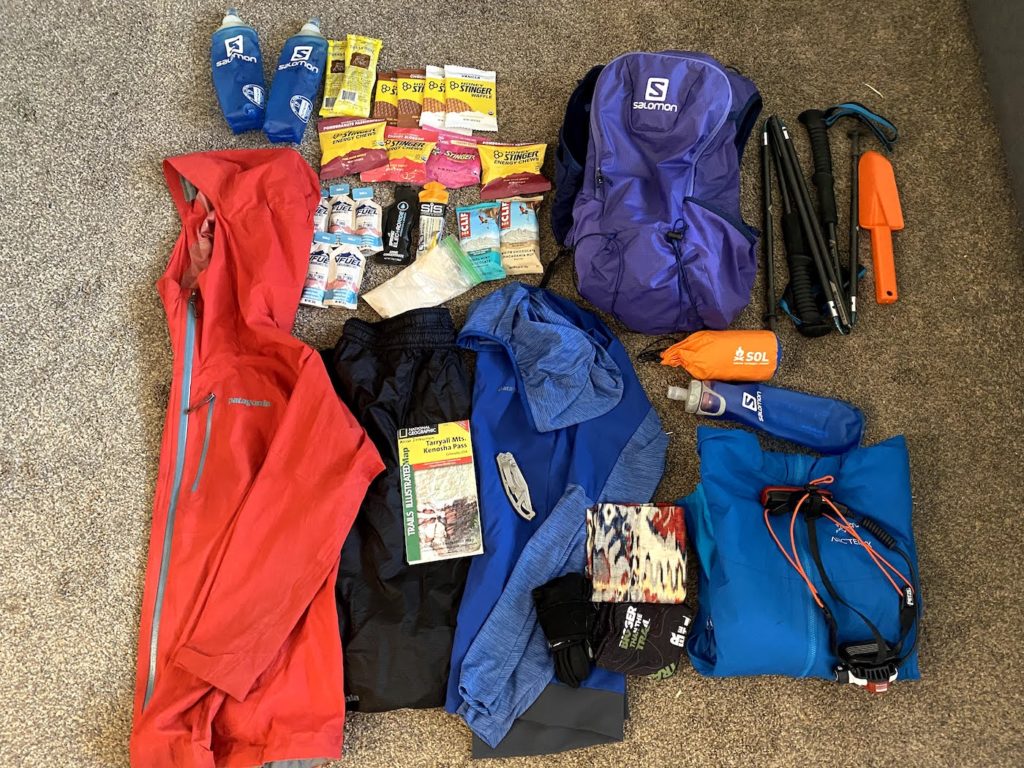
Are there any additional recommendations you have for race directors as they try to set their runners up for successful preparation?
As a race director, consider the long term impacts your race could have. Why did you consider having the race in that location in the first place? Probably because it’s gorgeous. Make sure the race won’t degrade that beautiful place and that you leave that place in as good of condition as you found it, if not better.
Make sure the runners have all of the info they need BEFORE the race. Keep in mind that some people are traveling from out of state and have never been there before. Those people might not know what to expect for weather or might not be familiar with the local terrain or what wildlife may be present. Have a checklist of what they should bring to the race. If restrooms aren’t available frequently – for both runners and crew – make sure they have a WAG bag or know how to dig a cathole. Don’t avoid the taboo issues. Human waste is one of the worst pieces of litter we can leave behind, especially if we are having a race in remote locations with hundreds of people.
Another important thing for race directors to keep in mind is to have excellent communication with emergency response personnel. Make sure they know the quickest AND least impactful ways to access runners in emergencies. A lot of impacts occur in our natural areas because of rescue attempts. Sometimes trees are cut down and ATVs have to blaze a path to get to injured runners, but you can try to communicate with emergency personnel ahead of time to reduce impact.
And finally, make sure runners are informed about Leave No Trace principles. This could include putting a reference card or brochure in race packets or talking about Leave No Trace at your pre-race meeting. You could even mention Leave No Trace principles on your race website.
Principle #2 is: “Travel and Camp on Durable Surfaces.” Muddy conditions come to mind and many runners have no choice but to run in muddy conditions on race day. What is some advice you have? What are some other surfaces that ARE NOT durable that may not come to mind for runners?
With muddy conditions, the number one thing you can do is to not run there. That is not an option for trail runners competing on race day, so the best thing you can do is run directly through the mud. Why is this important? First and foremost, when you try to avoid the mud you may end up widening the puddle for runners coming behind you and thus, widening the trail. I know when I’m running I can get tunnel vision and if I’m right behind someone and I see them jump to the side to avoid something, most likely I will do the same, so make sure to set a good example and run through the mud.
Another non-durable surface to avoid is ice. Ice is durable in itself but isn’t safe unless you have spikes. Avoid vegetation especially in sensitive areas like the alpine. Remember that soil has living organisms in it and when you compact the soil and damage those organisms, the ability of the soil to resist wind and water erosion is reduced. Staying on the trail means you are not destroying soil ecosystems with your footprint.
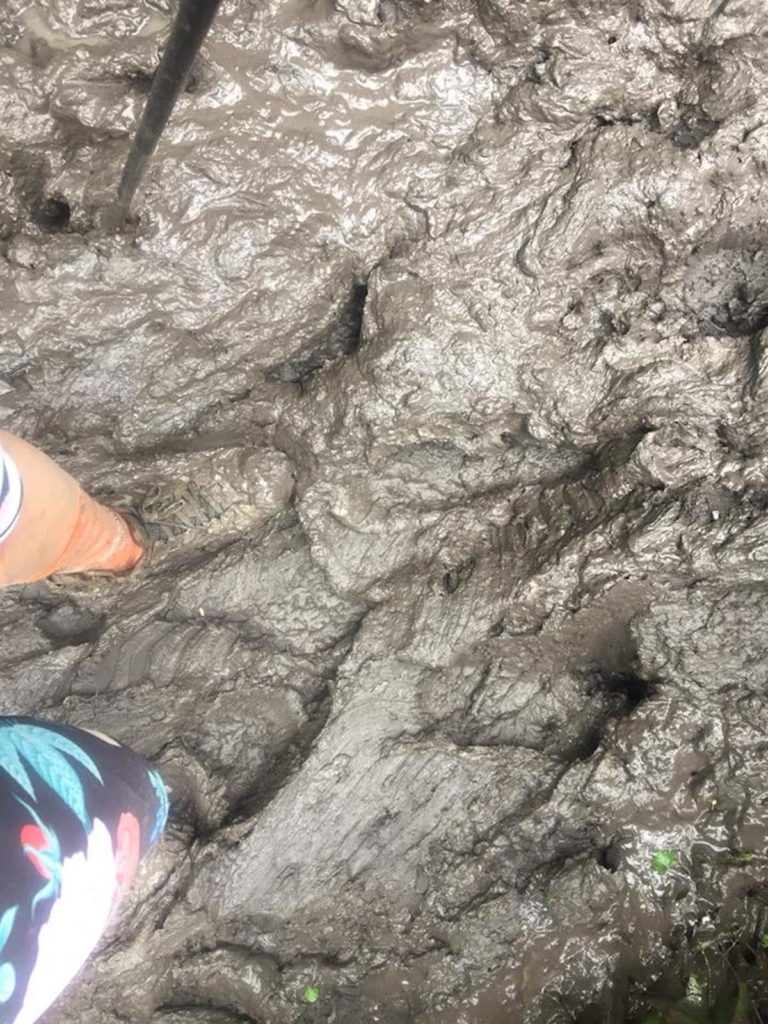
As volunteers set up aid stations, what tips do you have for selecting the most durable aid station sites. How can race directors mitigate impact to aid station locations?
Aid stations should be located on areas already experiencing impact, like a gravelly section off to the side. Try not to create new impacts. Avoid setting up aid stations on vegetation unless it is dry grass that can recover after you leave. Consider the number of people visiting the aid station and how they will use the bathroom. Are you going to have facilities or do you expect people to dig a cathole? That could be a lot of catholes in a small area. Set clear expectations with your aid station workers and with crew visiting aid stations.
Principle #3 is: “Dispose of Waste Properly.” Most trail runners will have to go to the bathroom in a place where there are no facilities to do so. What are some ways that runners can do this responsibly? What are some of the negative outcomes when runners don’t dispose of poop properly?
There are a few ways to poop along the trail responsibly. The best (i.e. least impactful) way is to bring a WAG bag with you and then throw it away in the next trash can. Another option is to dig a cathole, but keep in mind the ground can be frozen or difficult to dig in. If you do not want to use these options, know where restrooms will be provided along the route. If you’re peeing alongside the trail try not to pee directly on vegetation. Try to pee on bare ground or rocky areas.
Remember, human waste is a biohazard. It’s dangerous to the environment and animals could be attracted to it. We don’t want to attract animals closer to the trail, especially during a large event. Unattended waste can leach into groundwater which runs off and enters our watershed system. The less bacteria in the system, the less we have to filter out. Keep Giardia out of our drinking water. Also, poop is gross. Don’t leave a pile of waste and toilet paper that will negatively impact the experience of other visitors.
Can you outline the steps for digging a cathole?
Ideally you are going to dig your cathole at least 200 feet from water and 50 feet from the trail. 200 feet is about 70 adult steps. A trowel is handy because it acts as a shovel and a measuring device! The blade is 6-8 inches long, which is the depth the hole should be. The trowel does not touch biohazards and is not gross – do not contaminate it.
How can race directors minimize the impact of human waste at their events? What are ways they can make it easier for runners to dispose of waste properly even if it is not possible to have a porta-potty at every aid station?
The number one thing RDs can do to minimize human waste left behind after their event is to talk about it before the event so it is not regarded as “taboo.” Don’t assume that runners will know what to do if they need to poop when there is no toilet available. Consider addressing these questions by providing information in the race packet or at the pre-race briefing. You could even put this information on your race website.
You could include WAG bags with their race packet materials and have WAG bags at aid stations. Have trash cans at aid stations where runners can throw used WAG bags away. If a portalet cannot be delivered to the aid station location, you could have a privacy tent with a bucket and a toilet seat that volunteers transport out. Make it easy and accessible and, again, eliminate stigma. Maybe give incentives to dispose of waste properly. Let people know the impact their waste has if they don’t dispose of it properly.
Principle #4 is: “Leave What You Find.” What are some things that you notice runners take with them? What alternatives do you suggest?
The number one things we see carried out are rocks: granite, quartz, shale, fossils. Wildflowers, as well. These are items that need to stay where they are. Pollinators will stop visiting that area if flower populations diminish. Also, do not ruin the integrity of a historical area by removing artifacts or culturally significant items. Take a picture of unique items to preserve their integrity and leave them for other visitors to enjoy. Most races have other souvenir options like a race t-shirt.
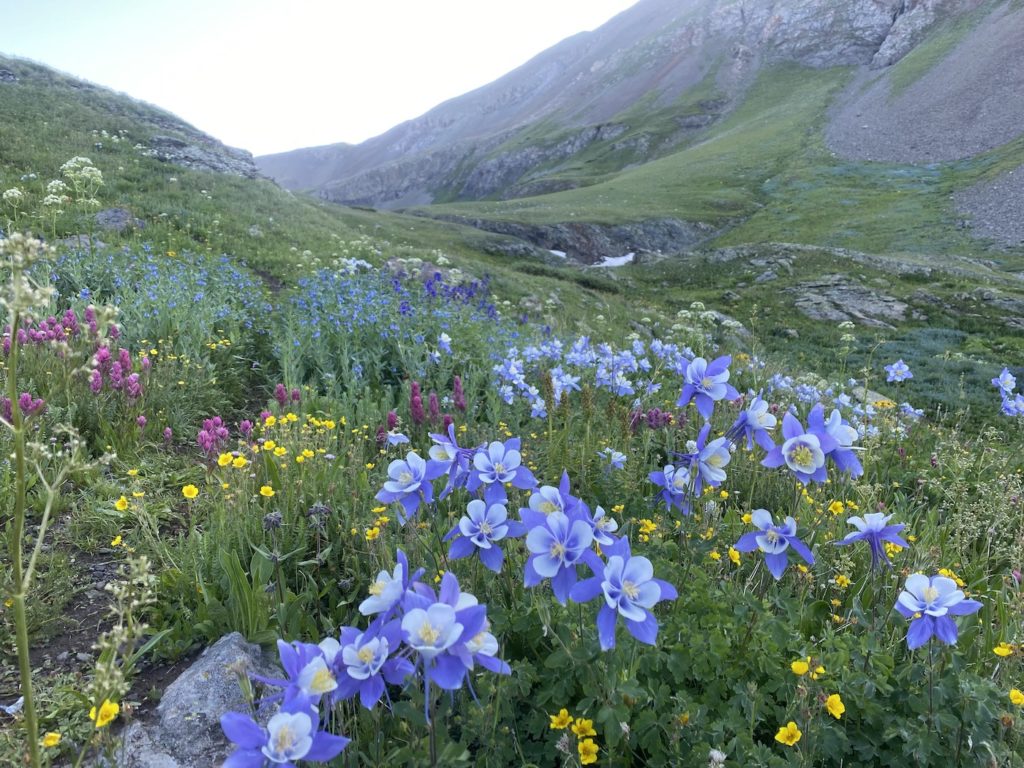
This principle also encourages that campsites are returned to the way they were when they were found. How can volunteers and crew members at aid stations reduce their impact and ensure this happens?
There are a couple of ways to do this. First of all, remember to locate aid stations on a durable surface. If you don’t have bare ground, look for dry grass. Make sure that the path leading from where people park to the aid station doesn’t require stepping on vegetation. We like to say, “Fluff your duff.” Yes, fluff the grass! Make the area look as undisturbed as possible and do a trash sweep, looking for micro litter. Litter breeds litter. People are more likely to leave trash in an area that already has trash. Don’t leave food waste behind.
Principle #5 is: “Minimize Campfire Impacts.” What are some ways that volunteers can apply this principle to warming fires at aid stations?
If you are going to have a warming fire, try to have a propane-based fire. These propane systems allow you to control the size of the fire, are portable, and have no sparks. Using a propane-based option eliminates the need for firewood collection. Often these options are approved to use during certain burn restrictions because they can be turned off.
If you are having a traditional fire, limit how big your fire is. The bigger the fire, the more resources needed to put it out. Make sure aid station volunteers have these resources. A fire is completely out when it is cool enough to put your hand in the ashes (which you could pack out to be extra Leave No Trace-savvy!). Naturalize the area where you had the fire by returning stones to where you found them and removing the ashes; future visitors are less likely to have fires or build additional fire rings there. Remember – don’t burn trash in warming fires. Pack out all trash. A final reminder: do not place warming fires under trees because, in addition to being a fire hazard, it can also smoke out wildlife in the trees.
Principle #6 is: “Respect Wildlife.” How can race directors set their runners up for success in this area? What tips do you have for respecting wildlife that is common in Colorado?
Race directors should know what wildlife lives in the area and, from there, consider if it is a breeding season or if wildlife is nesting close to the trail. Make sure runners are informed and know what to do when encountering that wildlife. Even mule deer can be dangerous during the rut. Make sure you are not antagonizing wildlife and causing them to become defensive.
Runners, crew, and volunteers should not leave food waste behind. It’s not good for them and can habituate them. Animals like ground squirrels and other rodents may beg for food. A fed squirrel is a dead squirrel. They are very capable of finding their own food in nature.
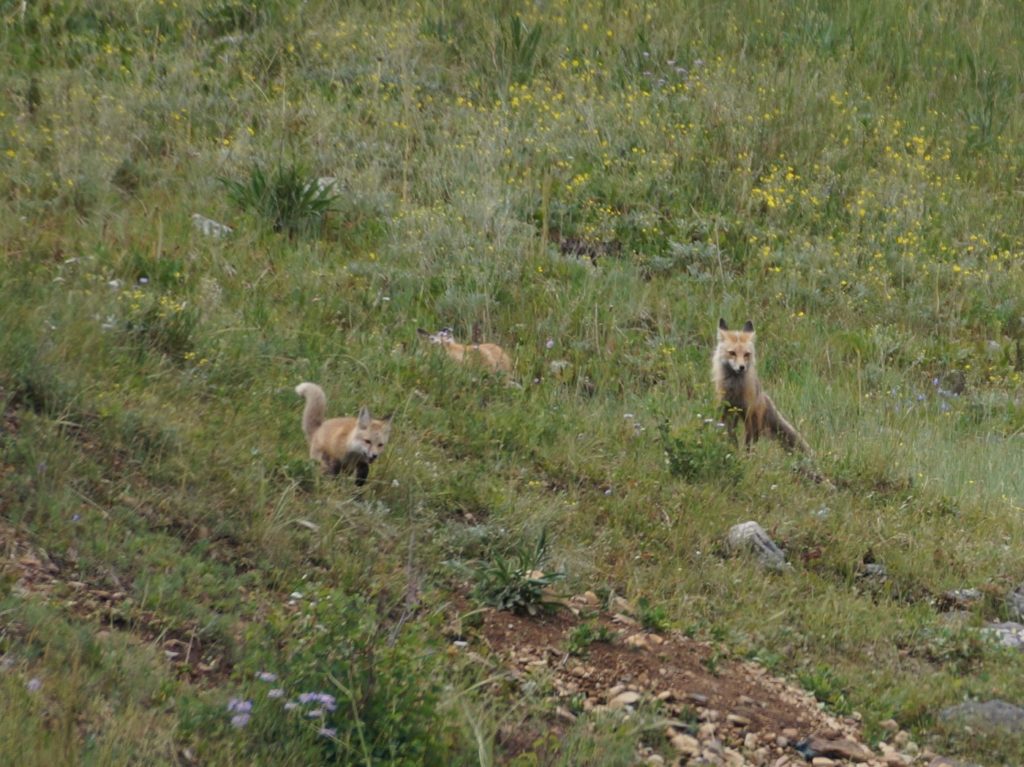
Principle #7 is: “Be considerate of Other Visitors.” What are some tips for runners as they are training on trails and competing in races?
Most likely you are never going to be running in an area where you have the trail 100% to yourself. Even though the race is extremely important to you, the experience of other visitors is just as important. Say hello to people. If someone steps off of the trail for you, say thank you. Encourage respectful behavior. If you are wearing headphones, make sure you can hear what is going on around you – maybe only have one headphone in. If you run with your dog, keep them on leash and make sure they aren’t getting in the way of other visitors.
Aid stations love to play loud, encouraging music, which is great, but think about what time it is and how loud you are. Race Directors could encourage quiet hours, perhaps from 10pm to sunrise depending on where you are. This shows respect to others camping in the area, but also animals come out to eat and drink at night. Loud music could scare them away and keep them from eating or drinking that night.
If people want to learn more about Leave No Trace, how can they do so?
To learn more, visit the website lnt.org. Leave No Trace has a huge network of community partners and members. Find out who your state advocate is for training opportunities. These state advocates, like myself, are volunteer coordinators that operate in each state. Currently, there are 35 states with advocates. If there isn’t one in your state, you could be that person! Leave No Trace programs are very beneficial because, like I mentioned in the beginning, Leave No Trace is not common sense.
If people are interested in becoming a Leave No Trace educator, where can they begin?
There are three levels of training. Awareness Workshops are taught by trainers or master educators. Awareness Workshops can be tailored to the needs of a group and are a “crash course” to what the Leave No Trace organization is and what the Seven Principles are. There are also Leave No Trace Trainer Courses that consist of 2 days, or 16 hours, of Leave No Trace education. These in-person courses are led by Master Educators (sometimes partnered with a Trainer). These courses go more in-depth and teach you how to lead Awareness Workshops. And finally, if you want to train the trainers you can become a Leave No Trace Master Educator. These courses consist of a 5-day backpacking trip, often led by other groups like NOLS. Master Educator courses can be expensive whereas other courses are often free. If these courses are cost prohibitive for you, Leave No Trace and other organizations offer scholarships. Depending on your profession, you could also ask your employer and they might support you attending the course as career development.
If race directors are interested in having a Leave No Trace volunteer running an info table at their event, perhaps at packet pick-up, who should they contact?
First reach out to your state advocate. If you reach out to Leave No Trace directly they will connect you with your state advocate, so this cuts out the middleman! If your state doesn’t have an advocate, Leave No Trace might be able to send you resources to create your own booth. A list of state advocates can be found on the website. https://lnt.org/map/#
Any other final thoughts?
I think that the ultra running world has such an amazing opportunity to increase Leave No Trace awareness no matter where they are. Runners are frequent trail visitors and are the eyes and the voice of the parks. Ultra runners are often interacting with park visitors more than park staff, so make sure those interactions are positive. Encouraging your fellow ultra runners to practice Leave No Trace is really important. Those small impacts add up over time and encourage behavior changes. Peer pressure is a thing and you can encourage your groups and races in your area to step up their game. YOU have the power to make an impact by not leaving one behind, and encouraging others to do the same!



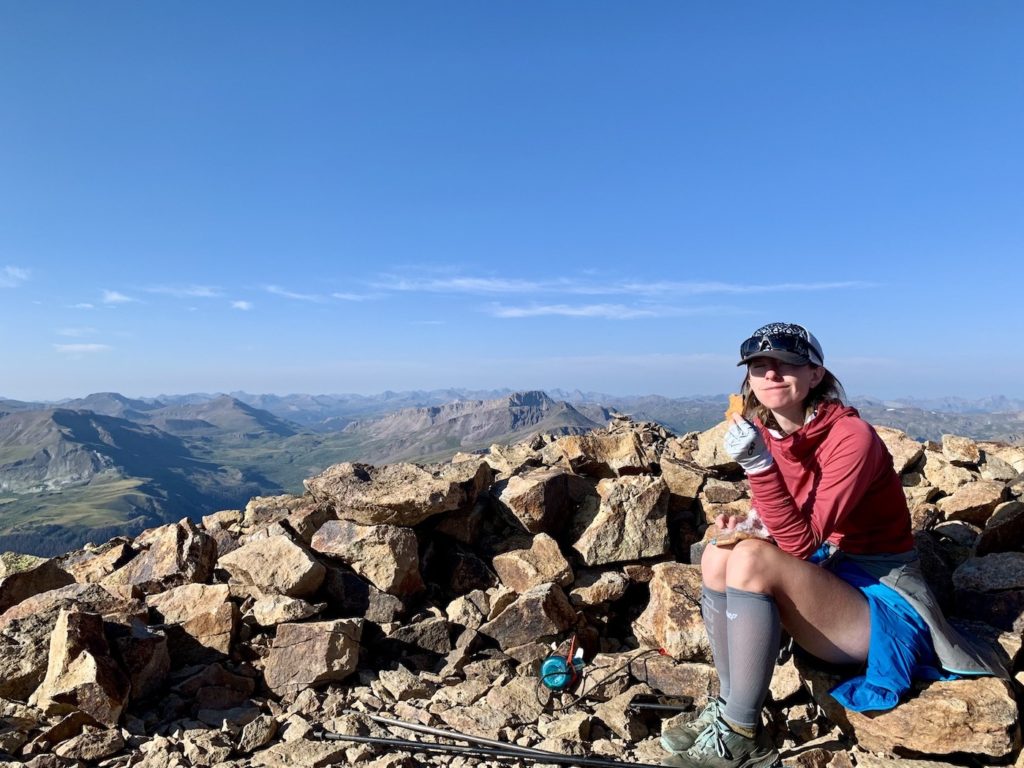











One Response
One of the best articles that I have read in a long time great work!